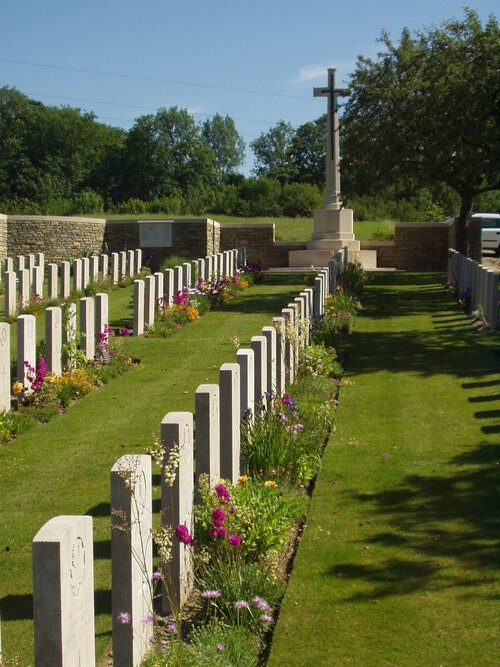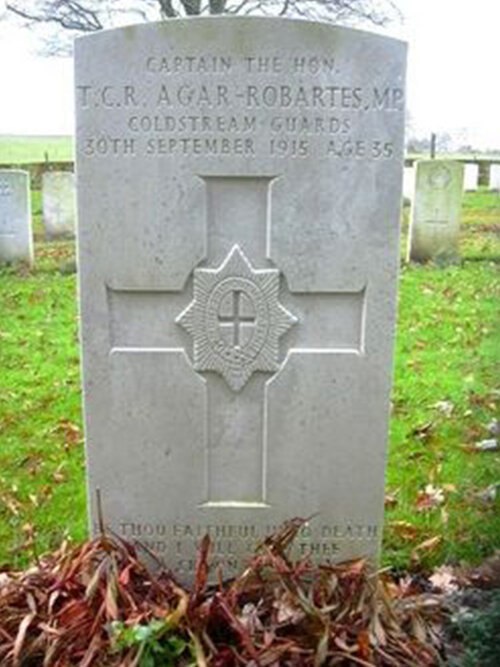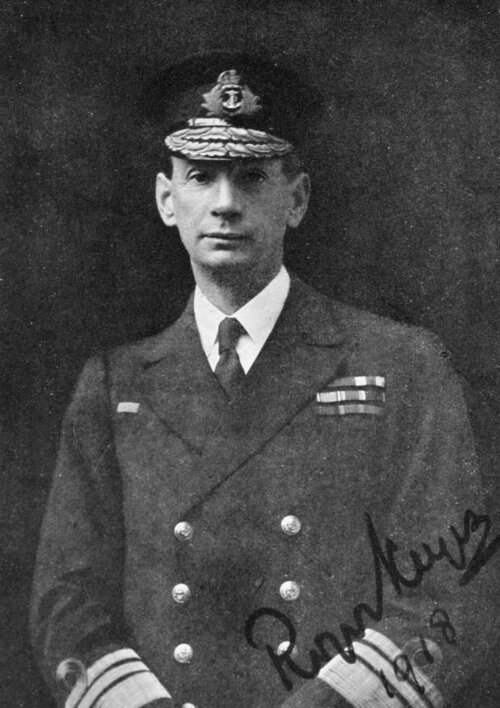03 September 2020
Politicians Who Went To War
If you’ve ever been to the Houses of Parliament you might have noticed one of several memorials to members and staff of both houses who lost their lives during the two World Wars. This week Rebecca Smith, Public Engagement Coordinator for the South West, explores the stories of some of these individuals and how the CWGC commemorates them today.

All casualties who are commemorated by the CWGC receive the same uniform tribute on a memorial or headstone, albeit with a record of their title which is included where appropriate. This is very different to the Parliamentary memorials, which were created after the world wars, as they often differentiate between members and staff.
Captain The Hon Thomas Charles Reginald Agar-Robartes (Tommy), was the eldest son of the 6th Viscount Clifden. The family home was Lanhydrok House, near Bodmin in Cornwall. In 1906 he was briefly elected as MP for Bodmin before being elected to the St Austell seat in 1908. He served as a Member of Parliament until his death in 1915.
The CWGC commemorate Tommy in the Lapugnoy Military Cemetery close to the site of the Battle of Loos where he was killed on 30th September 1915. Tommy served with the Coldstream Guards, and whilst rescuing a wounded comrade, was hit by a sniper and died of his wounds.
Interestingly, accounts of his life highlight how serving MPs were sometimes recalled to Parliament from the front line. This demonstrates the conflicting priorities politicians carried on their shoulders.
Keeping with a Cornish theme, I discovered the Bodmin constituency lost a subsequent Member of Parliament during the Second World War. John Rankin Rathbone, part of the Rathbone political dynasty with an aunt, grandfather and son all serving as MPs, was elected in 1935 and remained an MP whilst he served with the Royal Air Force.
Prior to the outbreak of the war, he served within the Ministry of Supply as Parliamentary Secretary, and following a visit to Germany in 1938 as part of a Parliamentary delegation, was so disgusted by what he saw of Nazi Germany that he joined the Royal Air Force Voluntary Reserve on his return.
He was killed in a bombing raid on 10th December 1940 and is buried in Schoonselhof Cemetery in Antwerp. Upon his death, his American-born wife, Beatrice, was elected unopposed to succeed him in Parliament. His younger brother, Henry Stephen Nicholas Rathbone died at Monte Cassino in November 1943.

The Palace of Westminster had its own Home Guard during the Second World War made up of members and staff. We commemorate at least one former member of this company – Patrick Munro. A former International Rugby player with caps for Scotland, he was MP for Llandaff and Barry between 1931 and his death in 1942.
He was 58 years old when, during an exercise in Westminster, he collapsed in the Liberal Whips Office and died before help could be provided. He is buried and commemorated by the CWGC in Cathedine (St. Michael) Churchyard in Brecknockhire in Wales.

Palace of Westminster Home Guard, Parliamentary Archives, PRG/5/29
Notable other names I discovered include Valentine Fleming, William Glynne Charles Gladstone and Lord Roger Keyes. Fleming was MP for Henley between 1910 and his death in France on 20th May 1917. The father of Ian Fleming, creator of James Bond, he died at Gillemont Farm as a result of German shell fire. He is buried at Templeux-le-Guérard British Cemetery.
William Gladstone served as MP for Kilmarnock Burghs from 1911 until his death on 13th April 1915. He was killed in action in France near Laventie and buried shortly afterwards. However, King George V gave special permission for his body to be exhumed nine days later and reinterred in Wales. His body was likely to be the last repatriated back to Britain. He is buried in the family plot in St Deiniol's Churchyard in Hawarden, Flintshire.
Lord Roger Keyes spent his whole career in the Royal Navy with pre-First World War postings to China and serving as Head of the Submarine Service. He had a distinguished career throughout the First World War and the inter-war years and played an active part in the Second World War.
He was MP for Portsmouth North from 1934, until his elevation to the House of Lords in 1943. During a visit to a US ship, he suffered from smoke inhalation when it was hit by the Japanese. He never recovered and was 73 years old when he died on 26th December 1945. He is buried in Dover St. James Cemetery.







